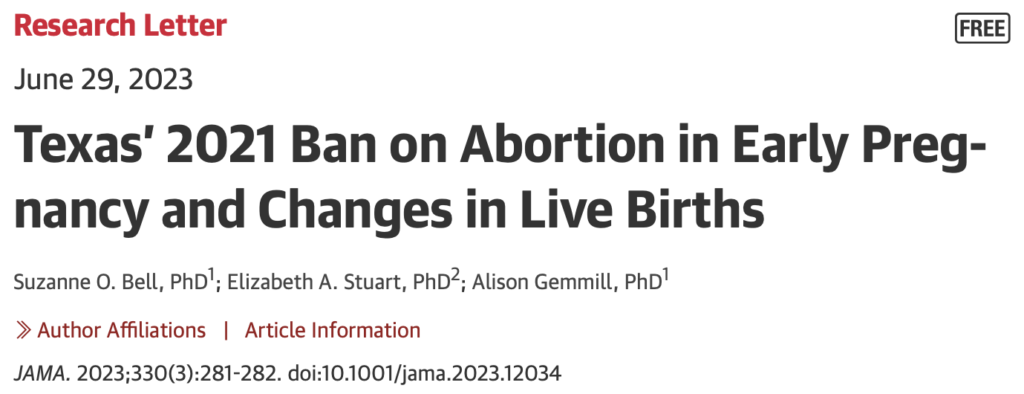Well, the answer to the title’s question is “yes, no and maybe”.
First, I should define a “reproductive health desert”. It is an area without a provider of reproductive health. Thus, there are maternity, fertility, contraceptive and abortion deserts.
Cortez (Montezuma County) was a maternity desert for a brief period of time. The hospital’s administration closed down their birthing center. Outrage from the community pressured the management to open it up again.
There were a few years that we had sophisticated infertility services in Durango. Unfortunately, the two doctors who provided this care are gone. The OB-GYN doctors who remain can help couples with most fertility issues, but some folks will need to go to Albuquerque or elsewhere for more complex infertility problems.
There shouldn’t be a real shortage of effective contraception anywhere in the US now that OPill® is available to anyone with a uterus. Or without—I got a package of this over-the-counter birth control pill for an art project from Amazon. They didn’t quibble over my gender.
(More about Opill®: It is a birth control pill that is available without a prescription. The only contraindications are pregnancy or a history of breast cancer. It needs to be taken every day at the same time.)
However, there are women who don’t want to use hormones or aren’t regular in taking pills or cannot afford $20 a month. They may live in a county without a clinic that provides the full range of family planning methods—this is how “contraceptive desert” may be defined, and almost 20 million women live in counties that lack this care.
La Plata County is far from a contraceptive desert. Even though Planned Parenthood is closed, the health department (in the beautiful AXIS Health System building), many physicians, and midlevel providers are happy to prescribe desired methods.
Unfortunately, we do live in an abortion desert now that PP is closed. PP clinics in neighboring Cortez and Farmington do provide medication abortion care, however they are limited to 11 weeks gestational age. Regrettably, procedural abortions (those done in the clinic) are not available in the Four Corners area at this time.
While on the subject of abortion, I just read a reason that the religious right has chosen to fight against this important part of healthcare. It was written by a Methodist pastor, David Barnhart.
‘“The unborn” are a convenient group of people to advocate for. They never make demands of you; they are morally uncomplicated, unlike the incarcerated, addicted, or the chronically poor; they don’t resent your condescension or complain that you are not politically correct; unlike widows, they don’t ask you to question patriarchy; unlike orphans, they don’t need money, education, or childcare; unlike aliens, they don’t bring all that racial, cultural, and religious baggage that you dislike; they allow you to feel good about yourself without any work at creating or maintaining relationships; and when they are born, you can forget about them, because they cease to be unborn….
‘It’s almost as if, by being born, they have died to you. You can love the unborn and advocate for them without substantially challenging your own wealth, power, or privilege, without re-imagining social structures, apologizing, or making reparations to anyone. They are, in short, the perfect people to love if you want to claim you love Jesus but actually dislike people who breathe.
‘Prisoners? Immigrants? The sick? The poor? Widows? Orphans? All the groups that are specifically mentioned in the Bible? They all get thrown under the bus for the unborn.”
A small group of concerned people are working to bring back both medical and procedural abortion services to Durango, but it may take months.

